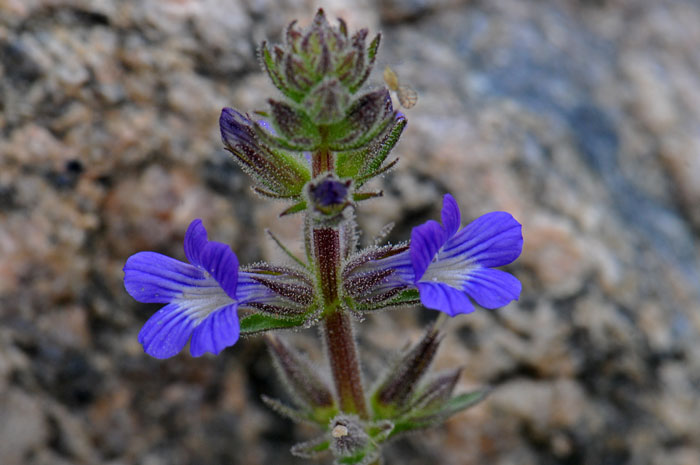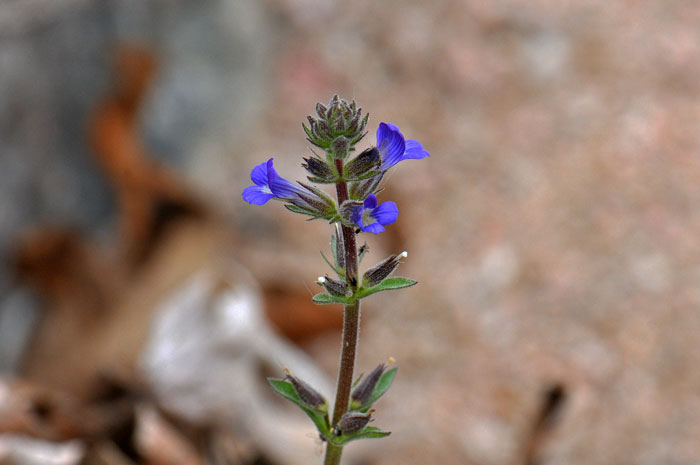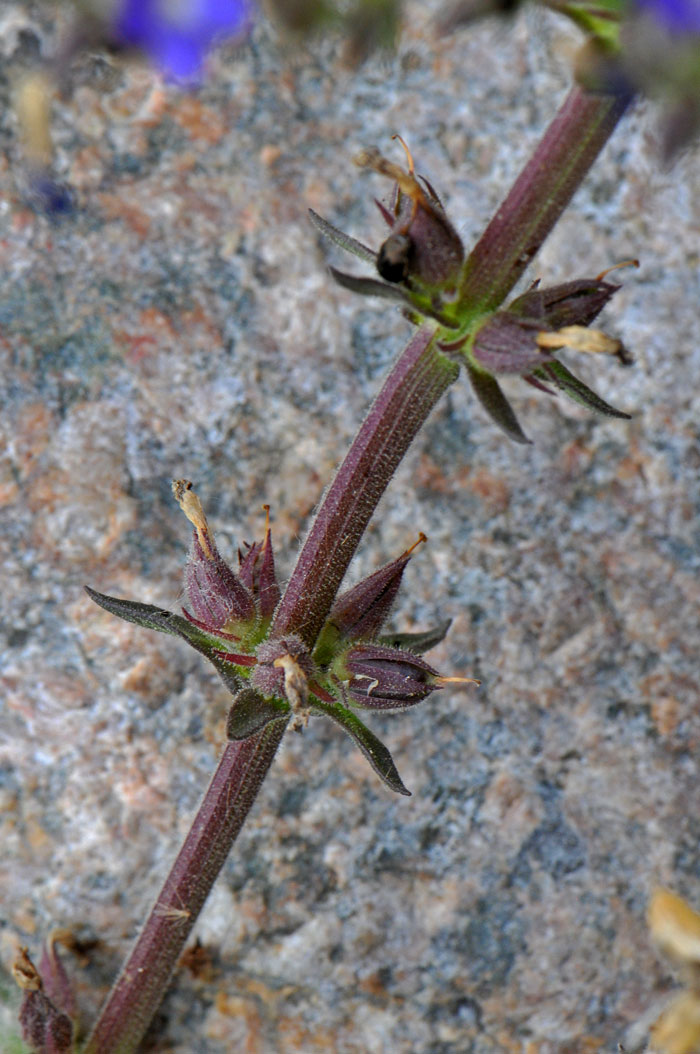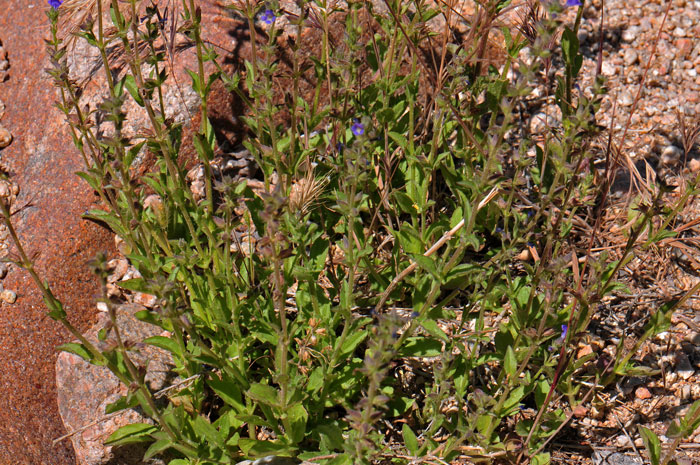Stemodia durantifolia, Whitewoolly Twintip




Scientific Name: Stemodia durantifolia
Common Name: Whitewoolly Twintip
Also Called: Purple Stemodia, White-woolly Twintip
Family: Scrophulariaceae, Figwort or Snapdragon Family - Moving to Plantaginaceae
Synonyms: (Capraria durantifolia, Stemodia arizonica)
Status: Native
Duration: Annual
Size: Up to 15 inches or more.
Growth Form: Forb/herb; plants glandular hairy; stems erect; sparingly branched.
Leaves: Green; leaves opposite in pairs or 3 per node; sessile or somewhat clasping at stem; lanceolate, elliptical and or obovate; margins serrated
Flower Color: Purple, pink or violet; flowers on short pedicels in terminal spike-like racemes; corolla with narrow tube; calyx with narrow lobes; fruit a capsule.
Flowering Season: March to October; most of the year in California.
Elevation: 1,000 to 3,500 feet; below 1,000 feet in California.
Habitat Preferences: Wet soil along streams, sandy or rocky.
Recorded Range: Stemodia durantifolia is relatively rare in the United States where it is found in AZ, CA and FL (Miami-Dade county). In Arizona it is central and southern parts of the state and in California it occurs in the southeast in Riverside and San Diego Counties. It is also native to northern Mexico.
North America & US County Distribution Map for Stemodia durantifolia.
U.S. Weed Information: No information available.
Invasive/Noxious Weed Information: No information available.
Wetland Indicator: In North America Stemodia durantifolia has the following wetland designations: Arid West, OBL; Atlantic and Gulf Coastal Plain, FACW; Western Mountains, Valleys, and Coast, OBL.
OBL = Obligate Wetland, almost always occur in wetlands
FACW = Facultative Wetland, usually occur in wetlands, but may occur in non-wetlands.
Threatened/Endangered Information: Stemodia durantifolia is included in the California Native Plant Society Inventory of Rare and Endangered Plants on list 2B.1 (rare, threatened, or endangered in California; common elsewhere)
In the Southwestern United States, Arizona and California each have 1 species of Stemodia, California there is 1 species, Nevada and New Mexico and Utah have 0 species, Texas has 2 species. All data is approximate and subject to taxonomic changes.
Comments: The type specie for Stemodia durantifolia is from the Santa Catalina Mountains, north and east of Tucson, Arizona. (Pringle in 1881)

